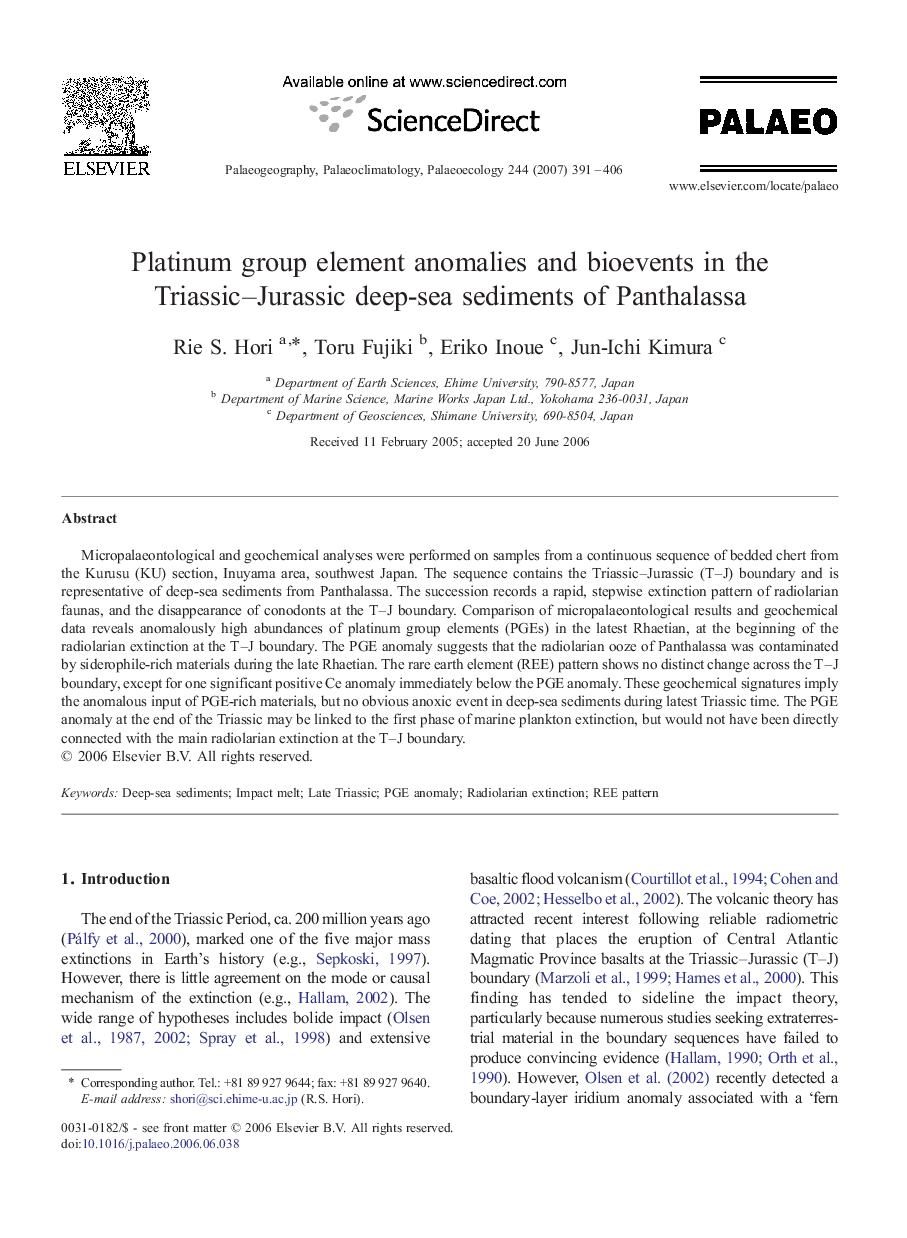| Article ID | Journal | Published Year | Pages | File Type |
|---|---|---|---|---|
| 4469242 | Palaeogeography, Palaeoclimatology, Palaeoecology | 2007 | 16 Pages |
Micropalaeontological and geochemical analyses were performed on samples from a continuous sequence of bedded chert from the Kurusu (KU) section, Inuyama area, southwest Japan. The sequence contains the Triassic–Jurassic (T–J) boundary and is representative of deep-sea sediments from Panthalassa. The succession records a rapid, stepwise extinction pattern of radiolarian faunas, and the disappearance of conodonts at the T–J boundary. Comparison of micropalaeontological results and geochemical data reveals anomalously high abundances of platinum group elements (PGEs) in the latest Rhaetian, at the beginning of the radiolarian extinction at the T–J boundary. The PGE anomaly suggests that the radiolarian ooze of Panthalassa was contaminated by siderophile-rich materials during the late Rhaetian. The rare earth element (REE) pattern shows no distinct change across the T–J boundary, except for one significant positive Ce anomaly immediately below the PGE anomaly. These geochemical signatures imply the anomalous input of PGE-rich materials, but no obvious anoxic event in deep-sea sediments during latest Triassic time. The PGE anomaly at the end of the Triassic may be linked to the first phase of marine plankton extinction, but would not have been directly connected with the main radiolarian extinction at the T–J boundary.
